Circular Raised Garden Bed Ideas: Create Your Dream Garden
Gardening can be a delightful and rewarding hobby, especially when you dive into creative ideas like circular raised garden beds. These garden beds not only maximize your gardening space but also add a touch of aesthetic appeal to your outdoor area.
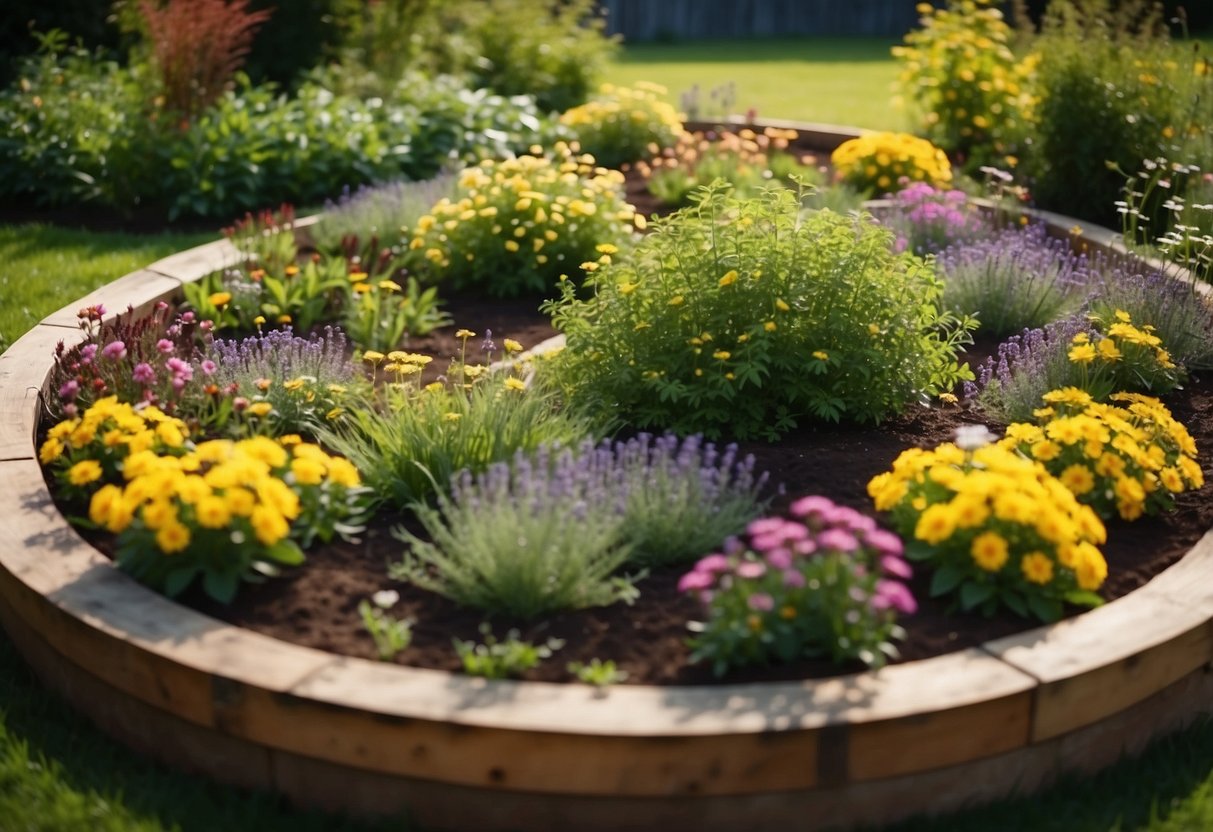
How can you combine functionality and style in your garden? Circular raised beds make gardening easier by providing easy access to plants and better soil control. Whether you are a seasoned gardener or just starting, these ideas can transform your garden into a beautiful and efficient oasis.
1) Raised Bed with Stone Border

A raised bed with a stone border can add a touch of elegance to your garden. Stones create a natural and sturdy look, blending well with plants.
You start by marking out the shape you want, usually a circle. After that, you can stack stones to form the walls. This design allows for good soil drainage and easy maintenance. You can find more detailed instructions here.
For a burst of inspiration, check out some beautiful stone raised garden bed ideas.
2) Tiered Wooden Planters

Tiered wooden planters are a great way to add layers to your garden. They make use of vertical space and can be very decorative.
These planters are often made from cedar or pine. You can build them yourself using DIY instructions or buy pre-made kits.
Each tier can have different plants, creating a lush, full look. They are perfect for small spaces. Use them to grow herbs, flowers, or even vegetables.
3) Metal Stock Tank Garden

Using a metal stock tank can be a fantastic way to start a raised garden bed. These tanks are durable and can last for many years.
To begin, you’ll need to install drainage holes in the bottom. This ensures water doesn’t pool and damage your plants.
Next, fill the tank with pea gravel and cover it with landscape fabric. This keeps the soil in place and aids drainage. Finally, add a mix of compost and topsoil for a nutrient-rich bed to grow your plants.
For more ideas, check out turning metal stock tanks into raised beds.
4) Raised Bed with Built-in Bench
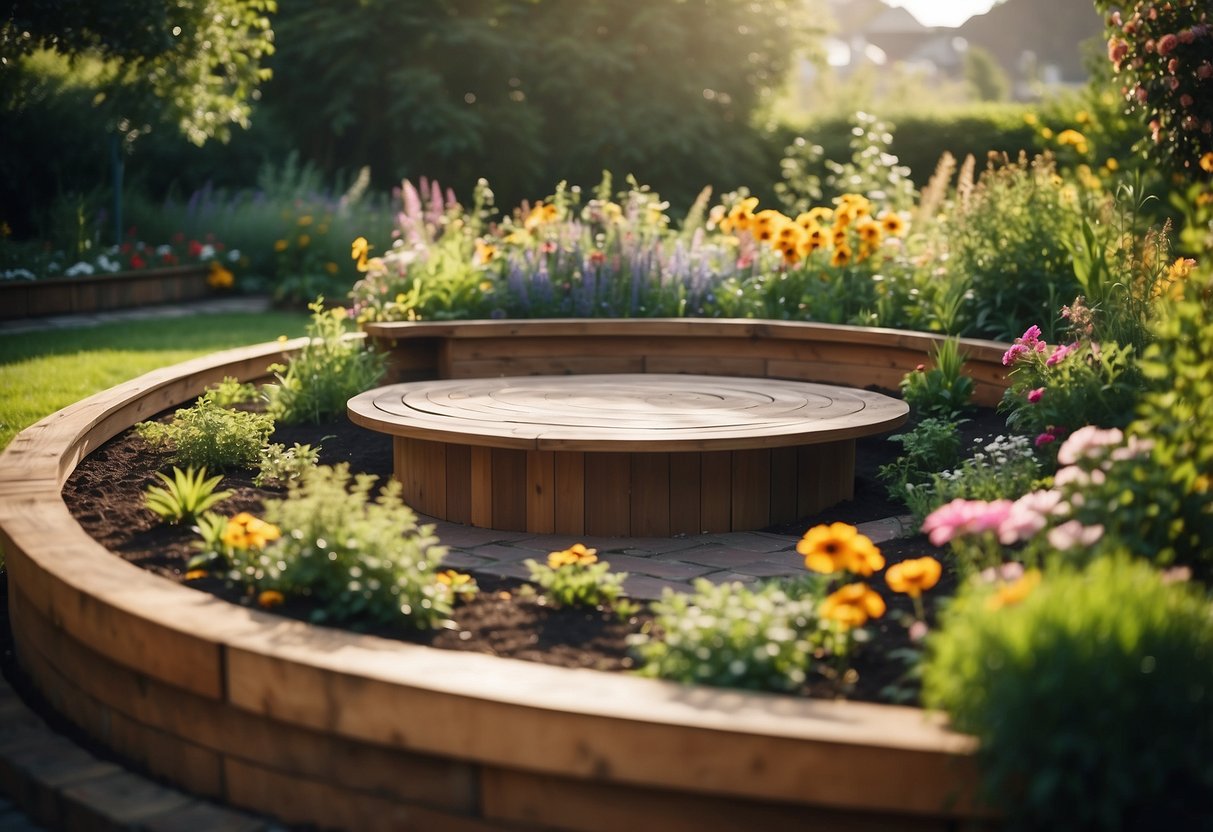
Adding a built-in bench to your raised garden bed is a great idea. It provides a handy place to sit while you garden.
You can use the bench to relax and enjoy your plants.
For building details, check out this guide on raised beds with benches.
5) Keyhole Garden Design

A keyhole garden is a circular raised bed with a unique composting feature. The design includes a keyhole-shaped notch for easy access to the compost basket at the center.
You start by marking out a circle, typically about 2 meters in diameter.
The walls of the garden can be built using materials like bricks, rocks, or even PVC kits. These walls are usually about 3 feet high.
Place a compost basket in the center, which can be made with chicken wire. This basket acts as the primary source of nutrients for your plants.
6) Woven Willow Garden Bed
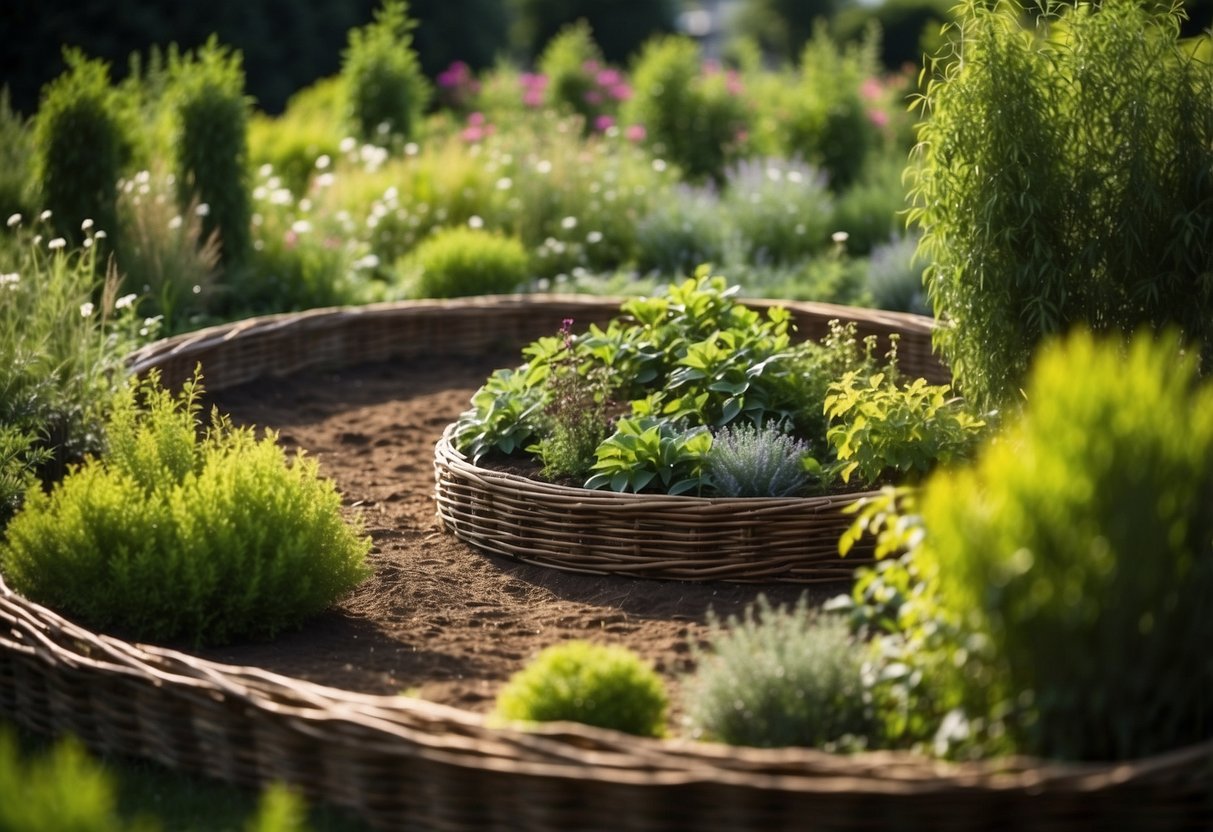
A woven willow garden bed is a beautiful addition to your garden. It blends perfectly with a natural landscape.
You can make it yourself using flexible willow rods. Just weave them together to form the sides of the bed.
This type of bed is both decorative and practical. It’s sustainable and gives your garden a rustic charm. For more information, check out ideas for woven willow raised beds.
7) Colorful Cinder Block Raised Bed
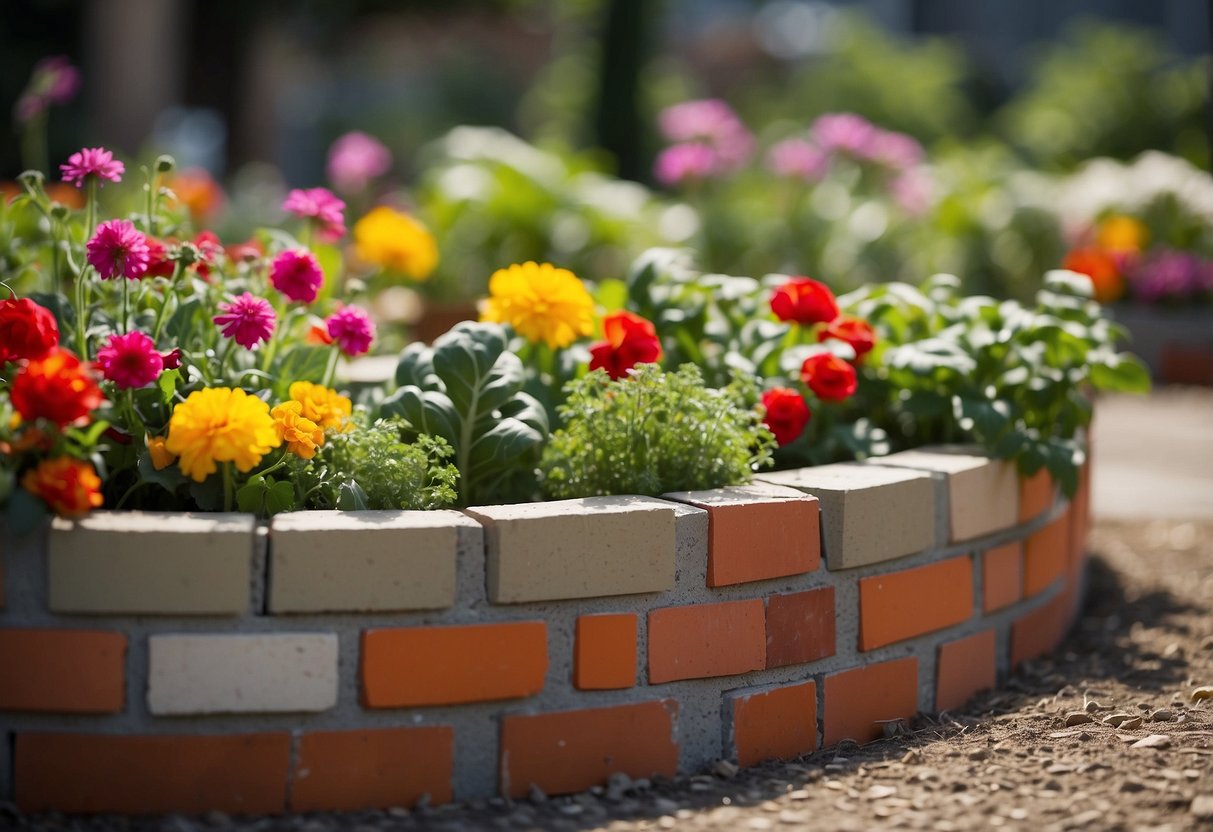
Creating a colorful cinder block raised bed is a fun way to brighten up your garden. You can paint the blocks in vibrant hues before stacking them.
Arrange the blocks in a circular shape for a unique design. The colorful blocks add a playful touch to your garden, making it stand out beautifully.
This type of bed also allows you to plant in the holes of the cinder blocks, giving you more space for flowers or herbs.
8) Reclaimed Wood Raised Bed
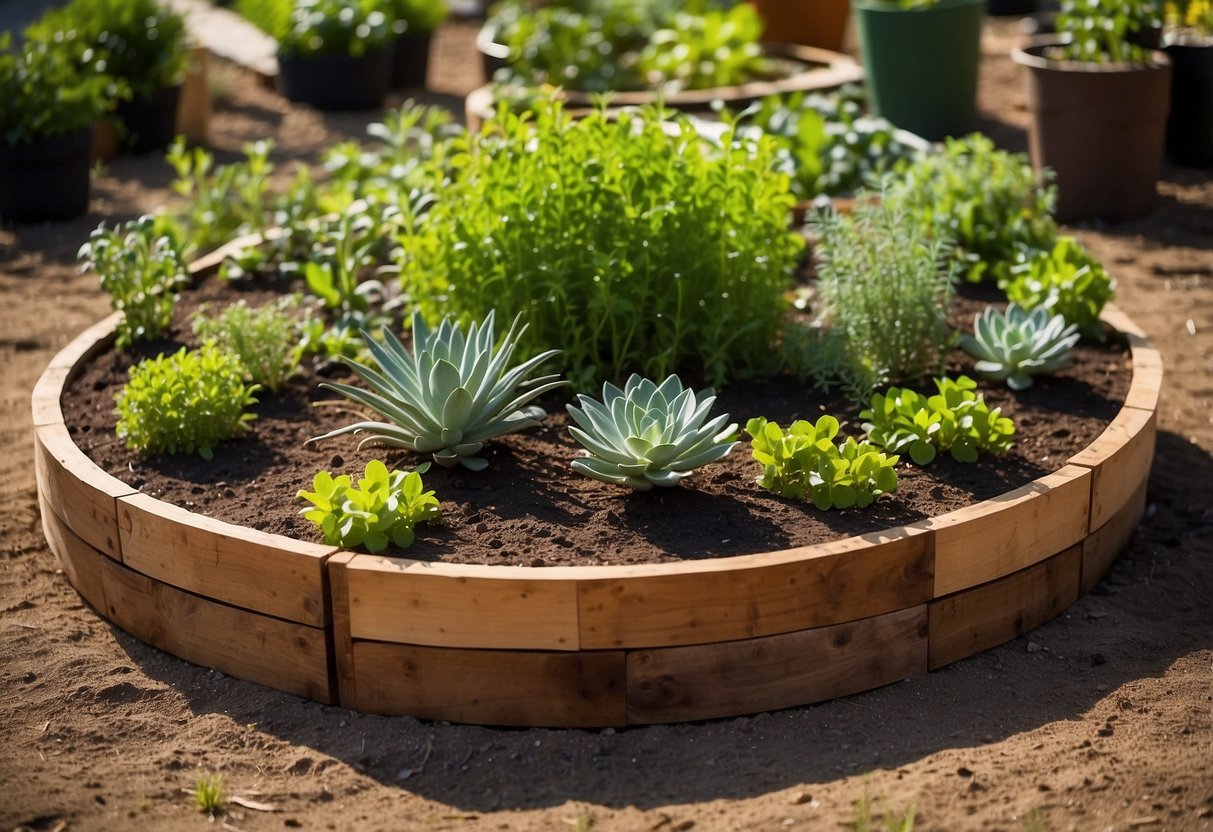
Using reclaimed wood for your circular raised garden beds is a great idea. It’s eco-friendly and adds a rustic charm to your garden.
You can find reclaimed wood in various places like old barns or pallets. Just make sure the wood is not treated with harmful chemicals.
Building the bed might require basic tools like a hammer and saw. Your garden will look unique and help recycle old materials at the same time.
9) Circular Herb Spiral

A circular herb spiral is a raised garden bed designed in a spiral shape. This design makes great use of vertical space, providing different growing conditions within a small area.
Using materials like stone or wood, you can easily construct your own spiral. The lower parts of the spiral are perfect for herbs that love moisture, while the higher spots, which get more sun, are ideal for plants like rosemary.
Herb spirals are popular in permaculture because they maximize space and create diverse microclimates. They add both beauty and function to your garden.
10) Galvanized Metal Raised Bed

A galvanized metal raised bed is a sturdy and stylish option for your garden. It comes in various sizes and shapes, including circular designs that can add a unique look to your space.
Galvanized metal beds are durable and resistant to rust. They can also provide excellent soil drainage for your plants.
You can see options like the Galvanized Raised Garden Bed for inspiration. This type offers plenty of space for growing vegetables and other plants in your garden.
Benefits Of Circular Raised Garden Beds
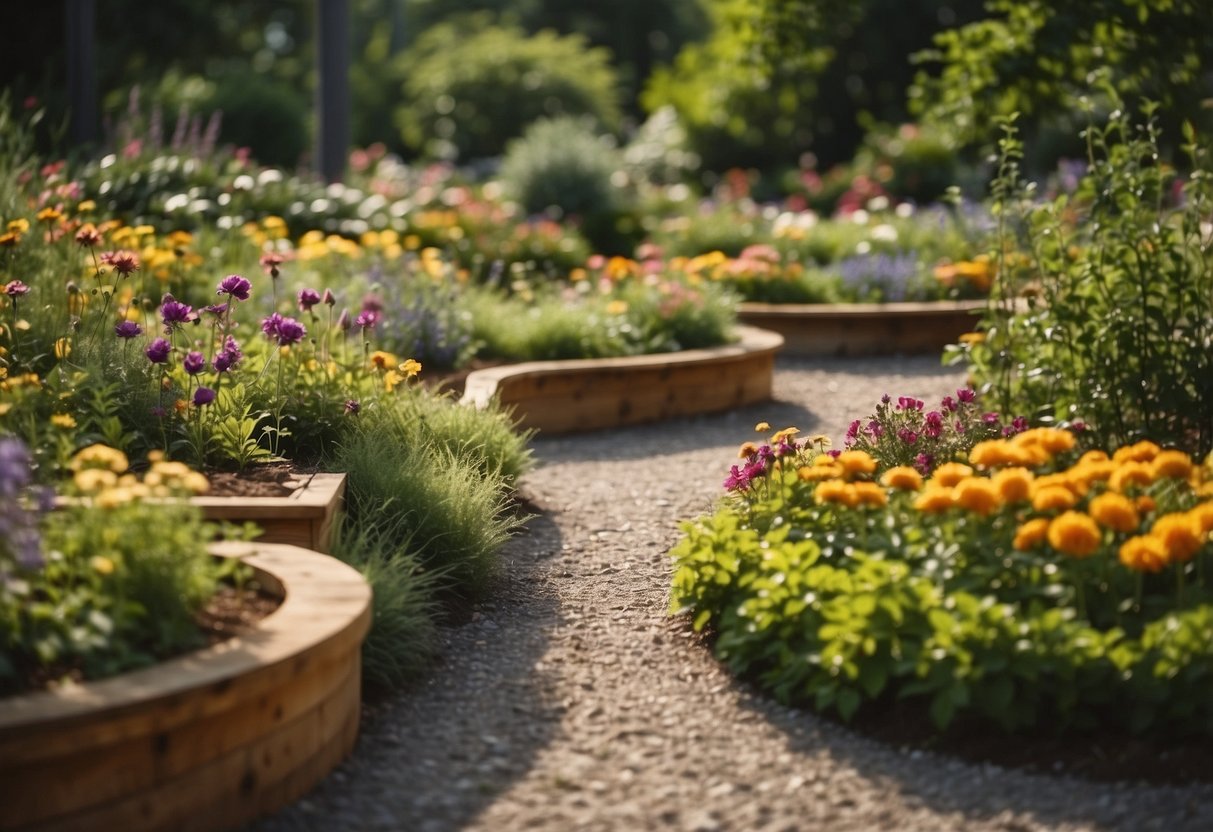
Circular raised garden beds offer unique advantages that combine visual appeal with practical gardening benefits, making your garden both pretty and productive.
Enhanced Aesthetic Appeal
Circular raised garden beds add a touch of elegance and style to any garden. Unlike traditional rectangular beds, they soften the landscape with their round shapes. These beds create focal points that naturally draw the eye, making your garden more inviting.
You can use circular beds to highlight specific plants or groupings.
They work well in both large and small gardens. Placing a circular bed in the center of a garden can create a striking visual impact. You can also use them to design intricate patterns when combined with other shapes. The symmetry and curves of circular beds add a cohesive look that enhances the overall beauty of your outdoor space.
Maximized Growing Space
Circular raised garden beds can help you make the most of your gardening area. Their shape ensures you can access plants from all sides, reducing wasted space. This accessibility allows for denser planting, leading to higher productivity.
The central point of a circular bed is perfect for taller plants, while shorter ones can grow around the edges. This layout optimizes sunlight exposure for all plants, promoting healthier growth.
Furthermore, the uniformity of a circle makes it easier to create efficient irrigation systems. Whether you prefer drip lines or soaker hoses, you can arrange them evenly around the bed to ensure your plants receive consistent watering.
By maximizing every inch of soil, you can grow a diverse range of plants, increasing both yield and variety in your garden.
Design Considerations
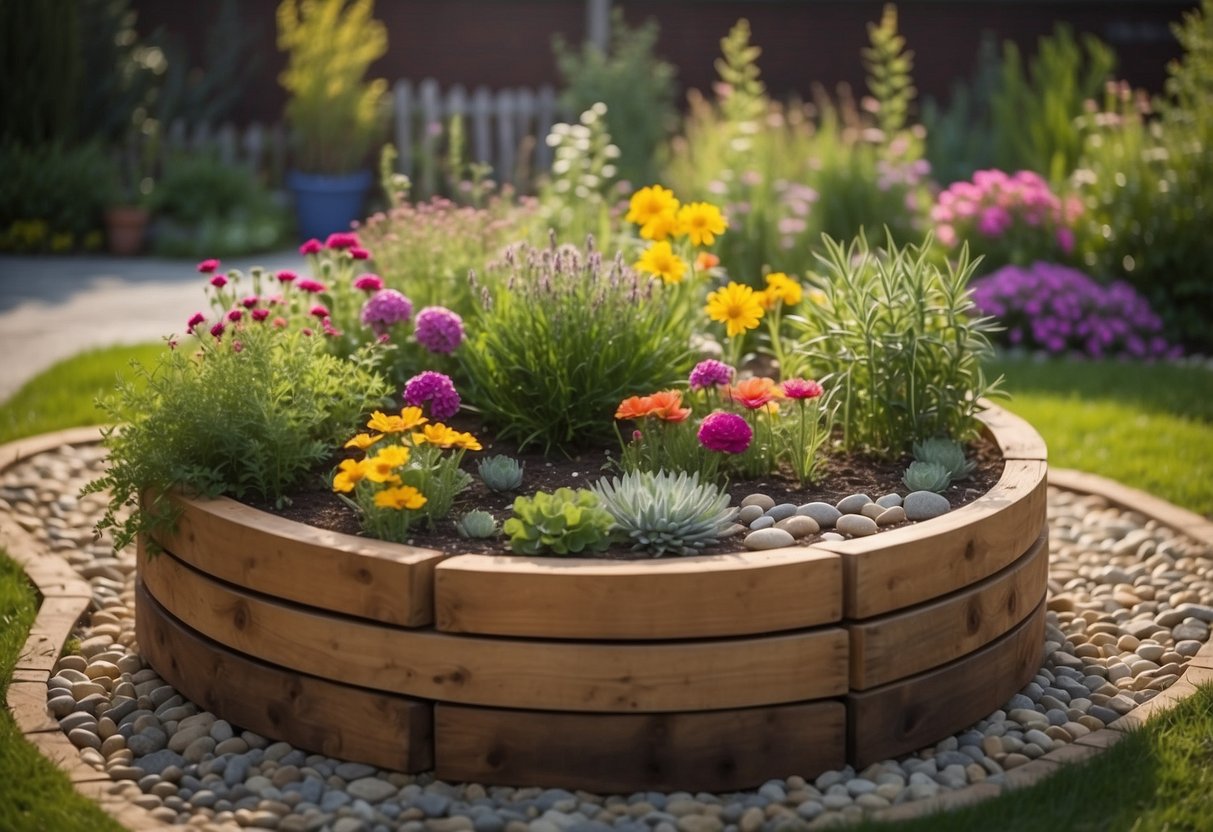
Creating a circular raised garden bed involves selecting the right location and materials. Both decisions will impact how well your plants grow and how convenient the garden is to maintain.
Choosing The Right Location
When deciding where to put your circular raised garden bed, sunlight and accessibility are key. Most plants need at least six hours of direct sunlight each day. Observe your yard and figure out which spots get the most light throughout the day.
Drainage is another important factor. Place your garden bed in an area where water doesn’t pool after rain. Good drainage helps prevent root rot and waterlogging.
Accessibility means you should position the garden bed where it’s easy for you to reach and care for your plants. If it’s too far or on difficult terrain, you’ll likely spend less time gardening.
Consider the proximity to water sources. You’ll need frequent access to water your plants, so the closer the bed is to a water source, the better. This makes watering less of a chore.
Selecting Suitable Materials
The material you choose for your circular raised garden bed will affect its durability, cost, and look. Common materials include wood, metal, and stone.
Wood is popular because it’s easy to work with and has a natural look. Cedar and redwood are more resistant to rot and pests. Treated lumber can also be used but ensure it’s safe for edible plants.
Metal garden beds are very durable and can withstand harsh weather. They also provide a modern aesthetic. Options like galvanized steel can last a long time without deteriorating.
Stone beds give a classic look and are extremely durable. They can be more expensive and harder to build, but they last a very long time and need little maintenance.
Choose materials that will complement your garden’s design and meet your needs for durability and maintenance.
Maintenance Tips
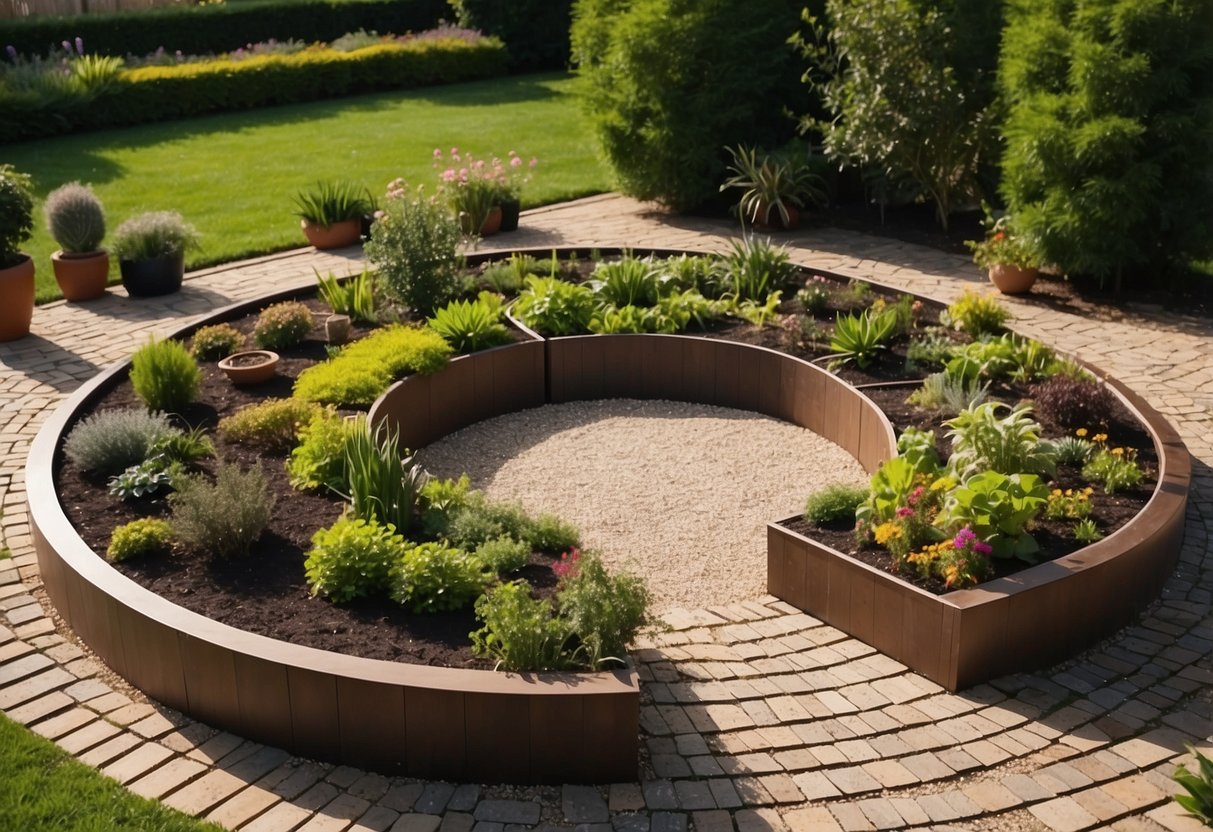
Proper maintenance of circular raised garden beds ensures healthy and productive plants. Focus on preparing the soil and using effective watering methods to keep your garden thriving.
Soil Preparation And Fertilization
Start with high-quality soil suitable for your plants. Mix topsoil, compost, and materials like perlite or vermiculite to improve drainage and aeration. The proper soil blend helps roots access nutrients and water efficiently.
Check the pH levels of your soil periodically, aiming for a pH between 6.0 and 7.0. Adjust the pH by adding lime to raise it or sulfur to lower it.
Fertilize your garden beds regularly. Use organic compost or granular fertilizers. Apply fertilizer every 4-6 weeks growing your plants. Organic compost also helps improve soil structure and nutrient content.
Irrigation Techniques
Efficient watering is vital for plant health. Install a drip irrigation system or use a soaker hose to ensure even distribution of water. These methods reduce water waste and promote deep root growth.
Water your garden beds early in the morning to minimize evaporation and give plants time to absorb moisture before midday heat. Avoid overhead watering, as it can lead to fungal diseases and water leaves instead of roots.
For better moisture retention, add a layer of mulch on top of the soil. Mulch helps keep the soil cool and reduces the need for frequent watering. Use organic materials like straw or wood chips for the best results.
Pay attention to the soil’s moisture level. Stick your finger into the soil about an inch deep; if it feels dry, it’s time to water.







